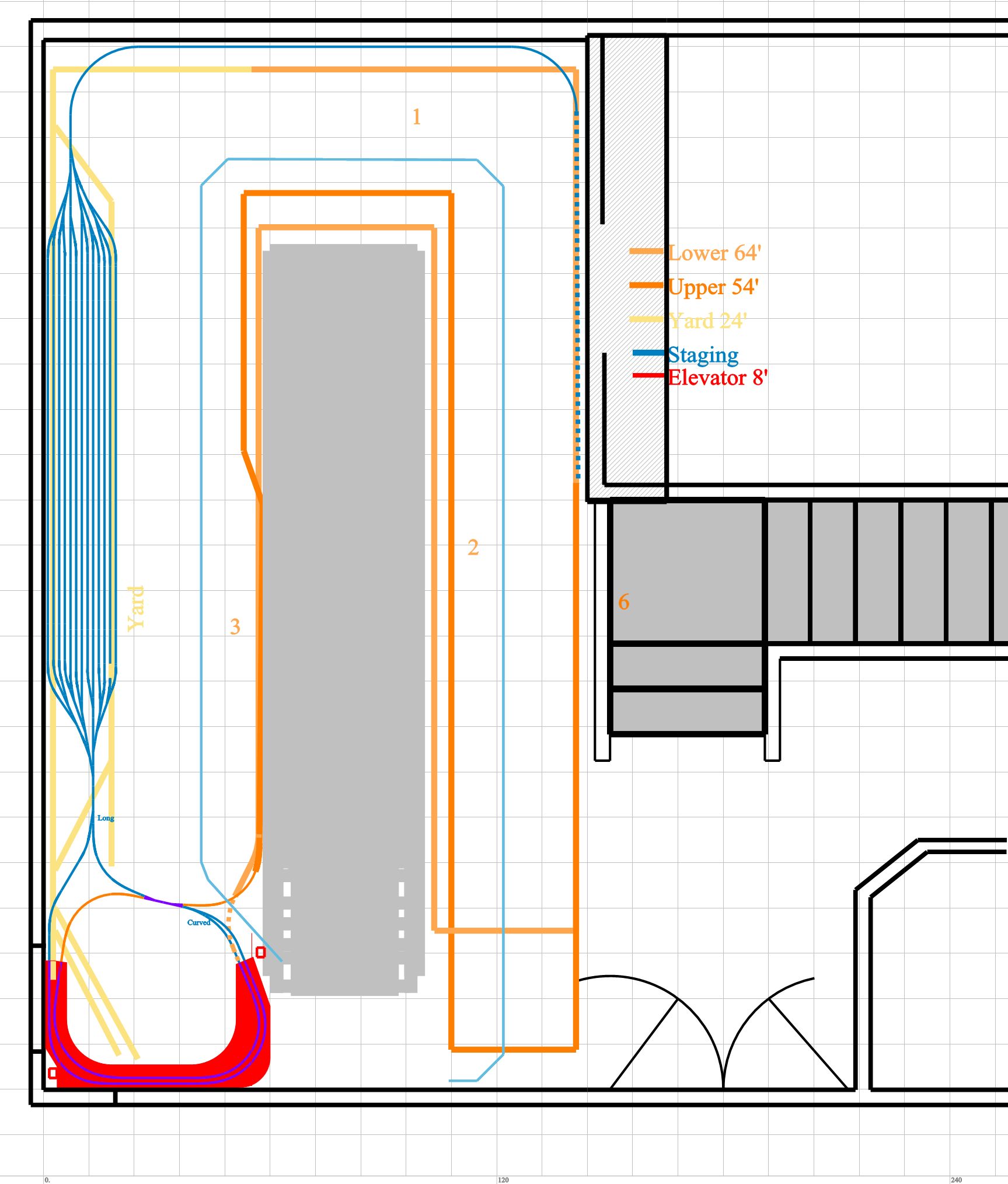

Then try the toggle the way you got it to work - between pins 1 and 3 on the Octopus. WHere the picture has the wire fromt he bottom LED going to pin 1, the black - connect that wire to pin 2 instead. This differs slightly from the picture - the picture could be wrong. Cathode of LED1 to anode of LED 2 to red. WHite to 330 ohm resistor to cathode of second LED. White to 330 ohm resistor to anode of one led. NO pusbutton connects black to white when pressed. I just grabbedone of mien to look at the circuit. It does briefly short the one LED to send the signal to the Octopus. The fascia controllers work the same way, except with a momentary pushbutton, and an extra resistor for a pullup somewhere. But since it's not given as an option, I think not. Beyond this, additional hardware or LED power amplifiers are needed due to the limited current available from the TamValley controller boards (Octopus III, QuadLN-Servo, QuadPic-Servo). Now if it's the OTHER LED that should be on in that position, it might actually work. This is expandable to slip switches with 2 through LEDs and 1 divergent LED, and is even expandable to having 2 panels controlling the same turnout. Comes with a 7' cable which allows you to stand next to your turnout while aligning the. Just one of these needed for all of your Octopus IIIs. Used with the Octopus III for alignment of servos (cannot be used with the Octopus II). I don't think this will work though, since when the toggle is closed it will be shorting out the one LED. This item is in Stock and available for dispatch. Next thign would be to connect LEDs to the Ocopus as shown in the lower right diagram in the wiring examples. But if you count 1-2-3 down oen side of the DPDT, and you have 1-2-3 on the switch conenction ont he Octupus, then you should have Octopus #1 to toggle #1, Octopus #3 to toggle #2. OK, sounds like you have the toggle right - using a DPDT is probably confusing you since it has more connections thant you need. No, the Octopus can operate with toggles - that's what the Mtr jumper is - momentary contact to trigger it or a fixed contact (toggle). I don't have one handy to look at to see where it goes. Maybe getting oen and looking at the circuit would help - it's much as I described above as somethign to try except there's an extra resistor. I'm guess it's possible, the fascia controllers work in a similar fashion although that s a pushbutton plus LEDs. The first and most common one is just lack of electrical power as is often mentioned also by Märklin themselves. When your turn-outs dont switch over there can be a number of causes. Wiring LEDs AND a toggle, that's nto shown int he examples. The problem with the 74490s is a bit (or a lot) more complex then meets the eye. The fascia controllers Duncan sells jus tplug in and work. It's when trying to figure out an alternate method of usign the device that you are pretty much on your own. I can see why he says "not for beginners" but using the deisnged components together isn t very difficult. I talked to one of the Motrak guys at Timonium, after the Springfield show - he said Duncan was at the Springfield show and cleaned him out of the servo mounts, they've been selling liek hotcakes. I know he's runnign behind these days trying to keep up with demand. Or for $8 you can get 4 of the controllers made for it, with LEDs and a pushbutton.Īfter my first trial Singlet, I had some technical questions before I ordered more, and DUncan promptly answered my email. Take the Mtr jumper off, and wire the SPST toggle switch across pins 1 and 3 of the switch/LED connector. Can this be made to work, or do I need to choose either DCC or push button control but not both? I had hoped to add a local panel for the other octopus/octocoders used on the layout.My best guess looking at the wiring examples would be to wire the LEDs as shown in the lower right diagream for two LED indicators. The "R" and "B" power connections are common for all LEDs and buttons through one connection to the octocoder control pins. The control connections are made through the pins on the octocoder, the wires between the octocoder and the remote panel are about 20 inches long. With no LEDs or buttons connected, the octocoder works as expected. However, issuing DCC accessory commands to the octocoder via NCE PowerCab will only move the machine from normal to reverse, but not back to normal. In the reverse (thrown) position, the reverse LED illuminates, but at a reduced brightness - I am using the same yellow LEDs for both indicators.

In the normal (closed) position, the normal LED illuminates. I've connected LEDs and buttons as shown in the octopus documentation - mashing the two schematics: The push button causes the switch machine to move between normal and reverse as expected. Goal: To be able to operate servo-switch machines via DCC accessory commands and local control panel with buttons and indicator lights.


 0 kommentar(er)
0 kommentar(er)
